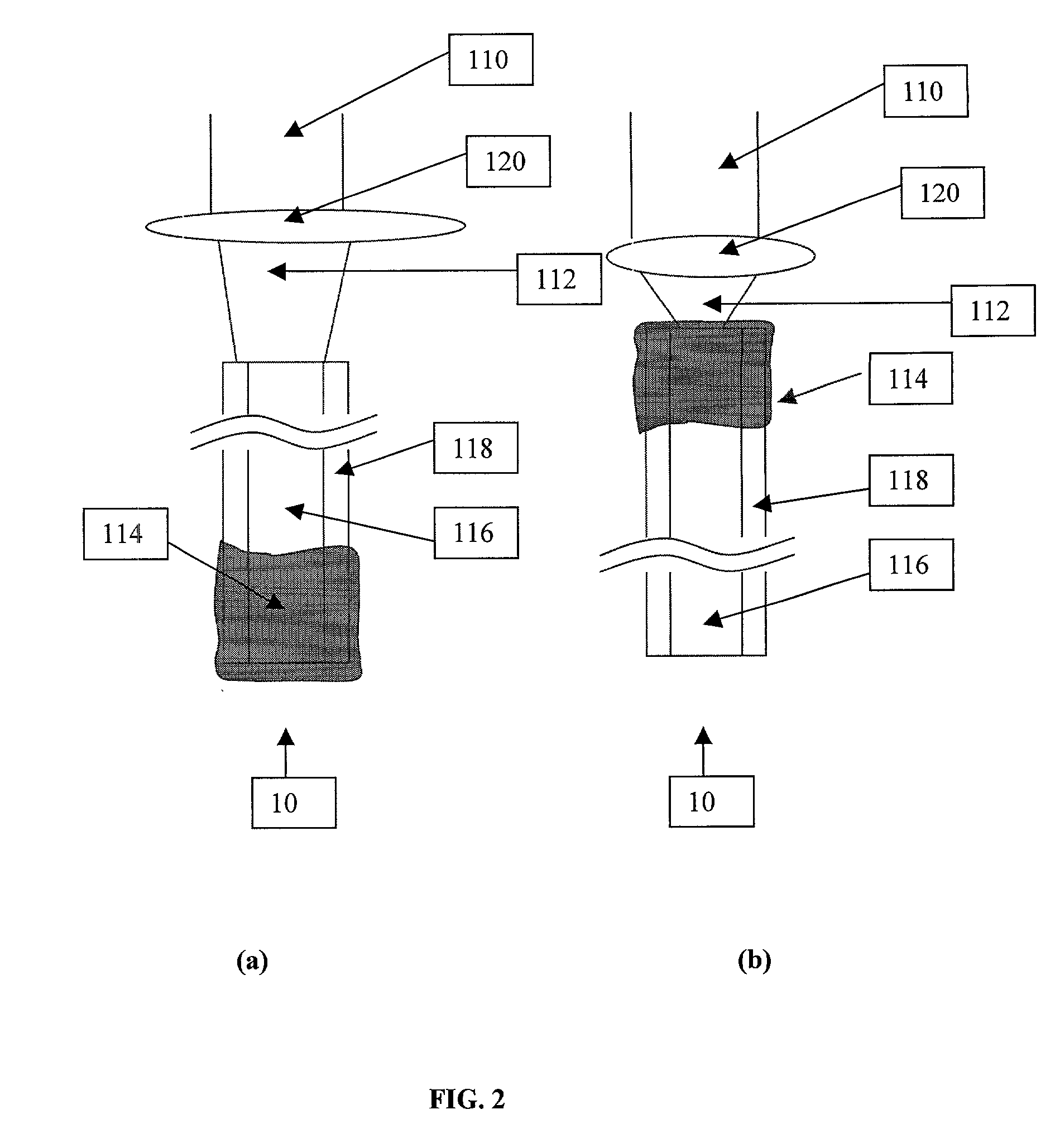Micromachined fiber optic sensors
a fiber optic sensor and micromachined technology, applied in the direction of instruments, fluid pressure measurement, fluid pressure measurement by electric/magnetic elements, etc., can solve the problem of limiting the temperature of operation of the sensor, and achieve the effect of reducing costs and adding stability
- Summary
- Abstract
- Description
- Claims
- Application Information
AI Technical Summary
Benefits of technology
Problems solved by technology
Method used
Image
Examples
example 2
[0068] Temperature Sensor Configuration
[0069] The temperature sensor is achieved by anodically bonding ultra-thin crystalline silicon onto a fiber end face (the figure above). Thin-film based temperature sensors have been realized in a number of ways including sputter-deposited semiconductor [6] and dielectric [7] materials. For effective operation the thickness of the silicon film of these Fabry-Perot interferometer based sensors usually falls within the range of 0.8 .mu.m to 4.3 .mu.m [6]. Greater sensitivity is obtained at the high end of this range; however, film-nonuniformity, and stress have been found to impose an upper thickness limit of about 2 .mu.m for sputter-deposited semiconductors. In this study we used the anodic bonding method to chemically bond ultra-thin crystalline silicon onto fiber end faces; this enables achieving a thicker crystalline silicon layer on the fiber end face. As a result, a higher sensitivity can be expected. Further, the use of crystalline silico...
PUM
 Login to View More
Login to View More Abstract
Description
Claims
Application Information
 Login to View More
Login to View More - R&D
- Intellectual Property
- Life Sciences
- Materials
- Tech Scout
- Unparalleled Data Quality
- Higher Quality Content
- 60% Fewer Hallucinations
Browse by: Latest US Patents, China's latest patents, Technical Efficacy Thesaurus, Application Domain, Technology Topic, Popular Technical Reports.
© 2025 PatSnap. All rights reserved.Legal|Privacy policy|Modern Slavery Act Transparency Statement|Sitemap|About US| Contact US: help@patsnap.com



